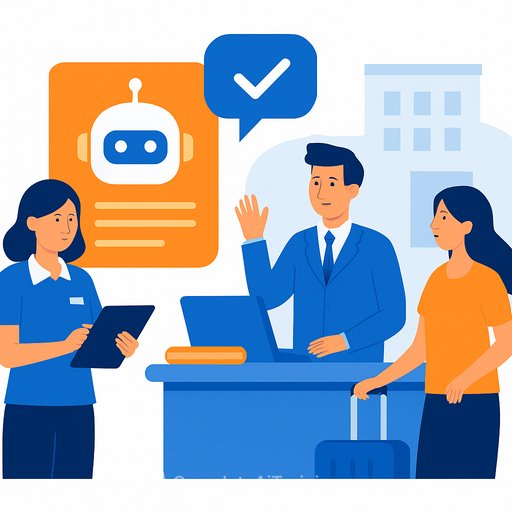Tech-Enabled, People-Centered: The New Staffing Paradigm
AI is now embedded in hiring. That brings speed and scale, but it can also strip out the conversations that surface fit, motivation and context.
Overuse automation and you risk shallow matches and weak engagement. Ignore AI and you fall behind on cost, cycle time and quality. The win is in the balance.
Where AI Efforts Go Off Track
Many HR teams race to adopt tools before defining the staffing problems to solve. That leads to spend without impact and friction for recruiters and candidates.
- Technology-first, problem-second: deploying tools without a clear use case.
- No integration plan: new workflows that clash with current ATS/CRM and culture.
- Disjointed stack: overlapping features, orphaned data and low adoption.
- Creativity and empathy squeezed out: fewer real conversations, weaker signal on fit.
- Treating AI as the strategy instead of the execution layer of the strategy.
Why Human Contact Still Decides Outcomes
In a recent job seeker survey, 68% said technology cannot fully replace personal interaction, and 72% said human contact is important during hiring. That's because trust, context and soft skills show up best in conversation.
Candidates want a clear voice on expectations, growth paths and culture. Employers need signals that a resume can't show-initiative, communication and judgment.
A Practical Split of Tech and People Across the Funnel
Sourcing
Use AI to write clear job posts, match profiles to requirements and run compliant outreach across email and text. Early-stage, low-stakes touchpoints can be automated to widen reach and move faster.
Human review still matters for role nuance, EVP messaging and prioritizing the right pipelines.
Screening
Let digital forms and chat schedule interviews, collect basics and verify requirements. Then shift to a recruiter-led conversation that probes motivations, soft skills and deal-breakers.
Be alert to bias in scoring models and résumé parsers. Align with current guidance on fair use of algorithms in employment decisions from the EEOC.
Onboarding
Automate forms, background checks, I-9, training assignments and day-one logistics. Give new hires a self-service portal for pay, tax docs and FAQs, plus an easy path to a human for exceptions.
Fast paperwork is good. A named contact who solves real issues is better.
An HR Playbook You Can Use This Quarter
- Define the problem: pick 2-3 high-friction points (time-to-slate, ghosting, quality of shortlist).
- Map the workflow: document steps, owners, data and handoffs from req open to day 30.
- Select tools that plug into your ATS/CRM and calendar stack. Cut overlaps before adding net-new.
- Set guardrails: fairness checks on models, clear candidate consent, human override on decisions.
- Automate the boring: scheduling, reminders, status updates, forms and compliance tasks.
- Protect the human moments: discovery calls, expectation-setting, offers and sensitive feedback.
- Train the team: prompt patterns for JD creation, structured interviews and escalation paths.
- Measure weekly: time-to-shortlist, candidate response times, recruiter capacity and drop-off points.
- Close the loop: survey candidates and hiring managers; push insights back into sourcing and screens.
Metrics That Prove You Have the Balance Right
- Speed: time-to-qualify and time-to-offer down without added interview rounds.
- Quality: onsite-to-offer rate and 90-day retention up for priority roles.
- Experience: candidate and hiring manager CSAT/NPS above baseline.
- Capacity: reqs per recruiter up while interview hours per hire down.
- Fairness: adverse impact monitored and within policy thresholds; clear audit trails.
Governance Without the Red Tape
- Create a simple RACI for AI use across sourcing, screening and onboarding.
- Keep a model register: purpose, data sources, retraining cadence and human-in-the-loop points.
- Run quarterly audits on scoring parity and false-negative patterns.
- Publish a candidate-facing statement on how automation is used and how to reach a human.
For risk management structure, see the NIST AI Risk Management Framework.
Tooling Checklist for HR
- ATS/CRM that supports open APIs and bi-directional sync.
- Scheduling automation integrated with calendars and video platforms.
- JD and message generation with human review and tone controls.
- Candidate matching with explainable scores and bias checks.
- Self-service portal/mobile access for status, docs and pay details.
- Analytics covering funnel conversion, source quality and compliance.
Candidate Experience That Scales
- Set expectations early: timeline, steps and decision criteria.
- Automated updates for status; human contact within 24 hours at key points.
- Structured interviews with consistent rubrics to improve fairness and signal quality.
- Clear feedback norms, even on rejections, to protect brand and referrals.
Bottom Line
Use AI to handle volume and logistics. Use people to read context, build trust and make the final call.
That balance cuts time-to-hire, improves fit and leaves candidates feeling respected. Start small, measure hard and expand what works.
Want to upskill your team on practical AI for HR?
Explore curated training by job role at Complete AI Training to build capability without the fluff.
Your membership also unlocks:






